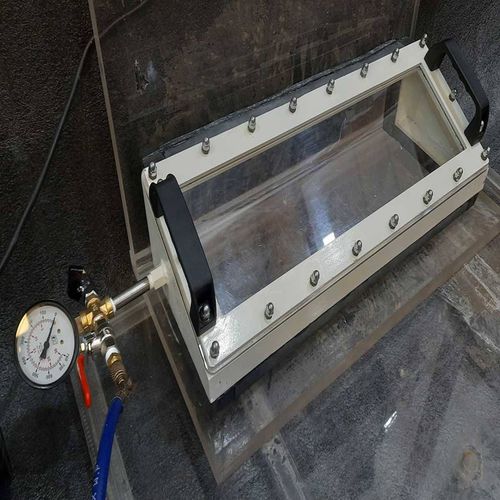
- Detection - Measurement
- Flow, Pressure and Level Measurements
- Vacuum leak tester
- Burhani Engineering Technology
- Products
- Catalogs
- News & Trends
- Exhibitions
Vacuum leak tester BETICV-3weld seambubble
Add to favorites
Compare this product
Characteristics
- Type
- vacuum
- Applications
- weld seam
- Other characteristics
- bubble
Description
Inside Corner Vacuum Box Bubble Leak Testing
Bubble leak testing of tank bottom plate welds and shell to bottom plate welds
When it comes to ensuring the structural integrity of welds, especially those found in critical applications such as pipelines, pressure vessels, and industrial equipment, meticulous inspection methods are essential. Inside Corner Vacuum Box Bubble Leak Testing is a specialized non-destructive testing (NDT) technique that plays a pivotal role in detecting leaks and imperfections in welds, particularly in challenging inside corner joints. In this comprehensive guide, we will explore the world of Inside Corner Vacuum Box Bubble Leak Testing, uncovering its benefits, various applications, setup techniques, and essential tips to ensure accurate and reliable weld inspections.
The Burhani Engineering Technology vacuum box has been designed for the operators according to API 650/653 recommendations. Bubble leak or vacuum box testing is an integral part of tank inspections as required by the American Petroleum Institute (API) and other international standards associations to establish the condition of tank bottom plate welds and shell-to-bottom plate welds.
Understanding Inside Corner Vacuum Box Bubble Leak Testing
Inside Corner Vacuum Box Bubble Leak Testing is a highly sensitive NDT method designed to assess the quality of welds, particularly in confined spaces and inside corner joints. This technique is especially useful for identifying leaks and imperfections that may be challenging to detect with other testing methods.
VIDEO
Catalogs
No catalogs are available for this product.
See all of Burhani Engineering Technology‘s catalogsOther Burhani Engineering Technology products
Vacuum Box For Leak Test NDT
*Prices are pre-tax. They exclude delivery charges and customs duties and do not include additional charges for installation or activation options. Prices are indicative only and may vary by country, with changes to the cost of raw materials and exchange rates.






















